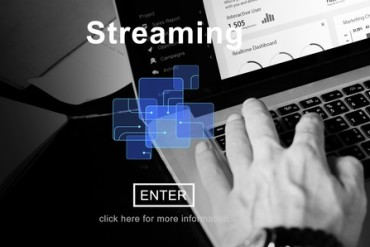
As innovation and digital transformation wash over every industry, digitization of value streams – value-stream-as-a-service – could become a baseline model.
From a technology perspective digitization means disruptive trends in connectivity, social media, IoT, analytics, mobility and more importantly the cloud. However, the success or survival rate of enterprises will very much depend upon the robust digitization of their Value Streams. The Enterprise-In-Motion highlighted the importance in the velocity of enterprises to digitize and automate their end-to-end value stream.
A key enabler is Digital Process Automation (DPA) – that includes robotic automation as well as business process management. Artificial Intelligence (AI) through digitization of business rules, predictive as well as machine learning models is the nervous system that guides and drives the automated Value Streams.
From Product to Service to Value (Outcomes)
Of all the various digital technologies the cloud is emerging as a de-facto leading enabler for transformation. A recent survey indicated about 81% of workloads will run in the cloud by 2020. There are robust ROI advantages of the cloud – especially when compared and contrasted to the data center internal IT provisioning.
With the cloud, provisioning is much faster – whether you are provisioning computational resources or business application software (and this is sometimes problematic for IT – as businesses sometimes use their credit cards and purchase enterprise software). The lifecycles of updates or changes to the resources – such as new versions of the software or application – are shorter and more agile. Resource utilization (avoiding
Though services could be expensive, in the long run, the overall average cost of cloud-based solutions will be less (see for example Cloudonmics). With the cloud, scalability is flexible and elastic – dynamically adapting to additional workloads with the matching storage or computational resources. This multi-faceted cloud agility is critical for the Enterprise-In-Motion. Cloud computing enables you to easily enable innovative software services while scaling with more capacity to handle a larger number of concurrent users.
The Present – and Future of XaaS
The cloud helps the Enterprise-In-Motion to deploy and grow faster with innovative service s
There are several categories of services that can be provisioned on the Cloud such as Infrastructure as a Service (IaaS), Platform as a Service (PaaS), and Software as a Service (SaaS). There are many other XaaS service models – such as Data-As-A-Service (DaaS). You can replace “X” with just about any service that is provided: Transportation-As-A-Service, Healthcare-As-A-Service, Food-As-A-Service – to name a few.
The underpinning of these service options is a mega-trend: All industries are transitioning to cloud-enabled service products versus ownership of physical products. Even ownership of homes and cars – once core to the American dream – are now evolving to service models. For sure the two models will co-exist in the foreseeable future, but the service economy is growing by leaps and bounds.
In fact, in the realm of service products, another evolving trend is selling services based on outcomes. In other words, we are in the midst of major transitions from product ownership to service provisioning to
Provisioning on the cloud with multi-channel access to the services is becoming the de-facto model in offering innovative services.
Cloud deployment itself has several options including the public cloud, private cloud, and hybrid cloud deployment options. Most companies will have hybrid cloud strategies. According to IDC: “By 2020, 75% of enterprises using public cloud will also use an enterprise private cloud platform; the majority of these platforms will support delivery of higher-layer PaaS and SaaS functionalities.”
More importantly, Enterprises-In-Motion are requiring flexibility in moving between alternative cloud provisioning and deployment models – depending upon various requirements such as reliability, security and scalability.
Value Streams In Intra and Inter Enterprise-In-Motion
Values streams are end-to-end and they typically connect the customer touch point to the rest of its capabilities or business units of the enterprise to achieve specific objectives. For instance opening an account has a customer application touch point via any of the supported channels: bot interaction, web page, mobile, or other. But it will also involve approval of the account (e.g. KYC validation for financial accounts), setting up the account, and validating and informing the customer. Typically various capabilities and business units will be involved.

The Value Stream goes through milestones and states towards completion. The Enterprise-In-Motion solution needs to be very robust and proactive in providing error-free, compliant and timely solution to account opening. Now opening an account illustrates an Intra-Enterprise Value Stream.
The Stream — as strong as the weakest link?
This means the Enterprise-In-Motion needs the digitization and automation of the Value Stream for visibility, control

Now consider the example of a Supply Chain Value Stream for provisioning parts to a manufacturing Enterprise-In-Motion. Here the capabilities and business units span various enterprises: the supplier or manufacturer of the parts, warehousing services, and delivery as well as transportation services. Different organizations can collaborate for the end-to-end supply chain values stream. The supply chain Value Stream itself could be provisioned by a different (e.g. other than manufacturer) organization. This agility and flexibility of value-stream collaboration – with all its challenges but also dynamic partnership opportunities – is the core value proposition of VSaaS.
Supply chains could potentially have many disruptions: weather conditions, civil unrest, transportation, logistics interruptions, warehousing challenges, and hostile takeovers – to name a few. This is an Inter Enterprise-In-Motion Value Stream that is difficult to manage without digitization and automation. The overall optimization of the supply chain needs a core DPA to govern and optimize the end-to-end stream.
The New Value-Stream-As-A-Service Model
VSaaS is a new model for collaboration involving multiple enterprises or business units. Each enterprise or its specific business unit will bring the required capability. They can come in to participate or opt-out. The VSaaS provider needs a robust service solution empowered through DPA – but provisioned as a service.
VSaaS supports capability “plug-ins” as participants in collaborative Value Streams: with specific roles and tasks automated through DPA. Thus, VSaaS supports collaborations between various capabilities of businesses across multiple enterprises.T
Through this transformational approach involving multiple organizations, there will be mutually-beneficial application & functional components, that are additive and would enhance the end-to-end Value Stream. Capability building blocks (potentially from different organizations or enterprises) can come together in services that provide value to target customers.
In other words, VSaaS becomes a mechanism for inter Enterprise-In-Motion innovation and new service creations: all powered and enabled with a DPA engine on the cloud. All participants will benefit, including potentially target end customers (e.g. consumers of products that involve multiple parts supplied through VSaaS).
IoT: Connectivity and Decentralization for VSaaS
There are two Digital Transformation trends that can have tremendous impact on the VSaaS approach: Connectivity and Decentralization.
- The Connected World: The Internet of Things (IoT) is considered one of the most important digitization trends. Both the consumer Internet of Things as well as the Industrial Internet of Things (IIoT) are starting to transform homes, businesses, governments as well as heavy industries such as discrete and process manufacturing. Connected Things can become participants in end-to-end digitized Value Streams. A service provider can make available status data of its connected IoT devices – while participating in the Value Stream. IoT devices can also be controlled within the context of service work conducted within the Value Stream. IoT devices are also becoming intelligent and autonomic. If there are specific tasks that need to be done – such as transportation with self-driving vehicles – the device can itself dynamically bid and participate in a Value Stream.
- The Decentralized World: Another even more recent digitization trend is the emergence of decentralized and distributed ledgers – also known as blockchain.
Blockchain is very much a revolution. It is the engine that empowers the emergence of the Internet of Value – extending the traditional Internet of Information and aforementioned Internet of Things. Blockchain needs to support Value Chains – through VSaaS. Now with VSaaS involving potentially various business partners the reliable exchange of value – often through cryptocurrencies – opens up many opportunities in accelerating business transactions across the Value Stream. For instance, Blockchain enabled Supply Chain is an ideal application – involving multiple suppliers plugging into a VSaaS solution – with Blockchain for either tracking or financial exchanges. For example Walmart is planning on leveraging Blockchain with its food supplier – to track farm-to-table transparency.
The Coming VSaaS Era
Value Stream collaboration within an Enterprise-In-Motion (Intra Enterprise) is quite challenging. Enterprises are organized vertically (the notorious org chart) yet Value Streams go horizontally attempting to obliterate business unit or business capability silos. A tall order and a huge challenge. Now when we go across enterprises (inter-Enterprise) involving multiple business units from different organizations the complexity becomes more challenging, to say the least.
Challenging and difficult. But not impossible.
In fact, this trend is necessary for the Enterprise-In-Motion – to extend beyond their boundaries with meaningful Value Stream collaborations on the Cloud, powered through Digital Process Automation. Through consortia and collaboration in specific industries we are already witnessing the birth of several initiatives that do need however a more robust VSaaS thinking.
With the proper governance through DPA together with IoT and “Internet of Value”
Similar to many publicly provisioned services for pay, the trust and reputation of participants will be determined by the evaluation of their partners as well as the customer of the Value Stream itself. With VSaaS Enterprises-In-Motion can leverage the cloud to gain visibility into the end-to-end work processes across multiple partnering enterprises and accomplish their shared objectives in an optimal, collaborative manner.
VSaaS for Inter Enterprise-In-Motion Value Streams is inevitable. It is the emerging trend of the XaaS service economy.






























